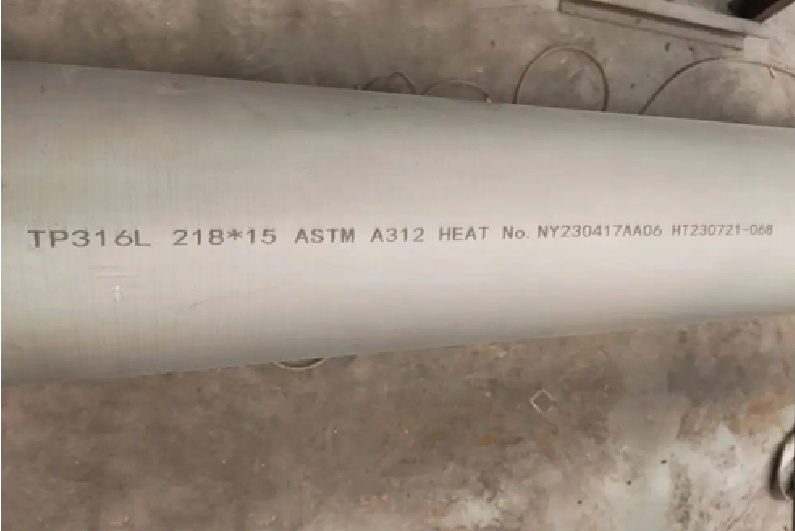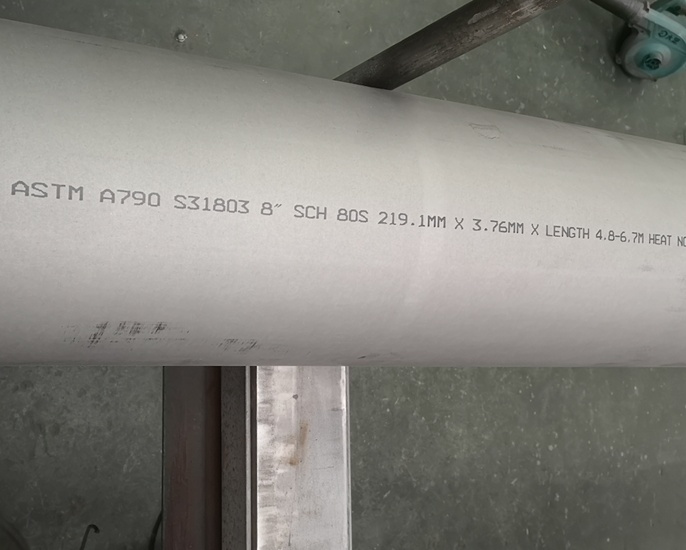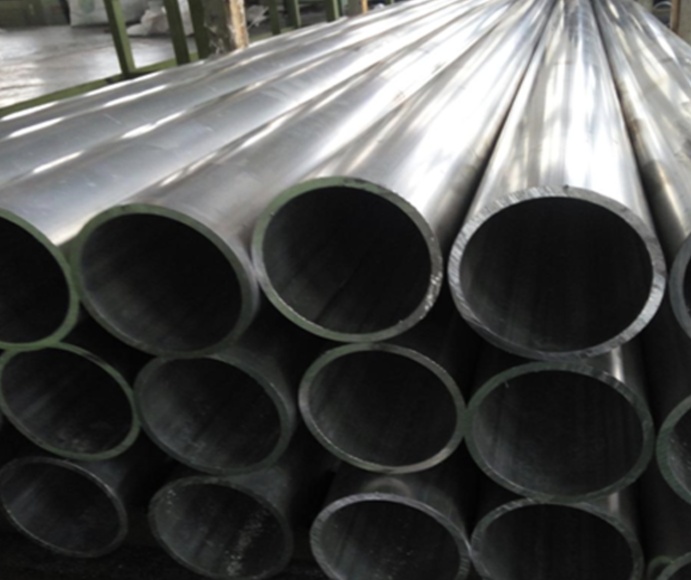ASTM A312 TP316L Stainless Steel Pipe Manufacturer
ASTM A312 is the Standard Specification for Seamless and Welded Austenitic Stainless Steel Pipes. This specification covers seamless, straight-seam welded, and heavily cold worked welded austenitic stainless steel pipe intended for high-temperature and general corrosive service.
TP316L (Type 316L) is a low-carbon of grade 316,which is an austenitic stainless steel pipe known for excellent corrosion resistance, high temperature strength, and superior performance in marine and chemical environments. It is widely used in oil & gas, chemical processing, food processing, and marine applications due to its high resistance to chloride pitting and stress corrosion cracking.
Chemical Composition of ASTM A312 TP316L
| Element | Composition (%) |
| Carbon (C) | 0.03 max |
| Manganese (Mn) | 2.00 max |
| Phosphorus (P) | 0.045 max |
| Sulfur (S) | 0.030 max |
| Silicon (Si) | 1.00 max |
| Chromium (Cr) | 16.00 – 18.00 |
| Nickel (Ni) | 10.00 – 14.00 |
| Molybdenum (Mo) | 2.00 – 3.00 |
| Nitrogen (N) | 0.10 max |
Mechanical Properties
| Property | ASTM A312 TP316L Requirements |
|---|---|
| Tensile Strength (MPa / ksi) | 485 MPa (70 ksi) min |
| Yield Strength (MPa / ksi) | 170 MPa (25 ksi) min |
| Elongation (%) | 35% min |
| Hardness (Brinell HBW / Rockwell B HRB) | 217 max (HBW) / 95 max (HRB) |
A312 Tp316L Pipe Specification
- Standards: ASTM A312 / ASME SA312
- Manufacturing Process: Seamless (SMLS) or Welded (ERW, EFW)
- Pipe Size Range:
- Nominal Pipe Size (NPS): 1/8” to 48”
- Outside Diameter (OD): 6.35 mm to 1219 mm
- Wall Thickness (SCH 5S to SCH XXS)
- End Connections:
- Plain End (PE)
- Beveled End (BE) – for welding
Heat Treatment of ASTM A312 TP316L Pipes
The TP316/ TP316L pipe shall be heat treated by solution treatment, in which the pipe shall be heated and held for long enough period at a temperature no less than 1900°F [1040°C] so that all chromium carbides can be fully austenitized/ dissolved. Subsequent water cooling or rapid cooling by other means shall be conducted to ensure no precipitation of carbides at grain boundaries.
OD tolerance table of astm a312:
| Standard | Out diameter (mm) | Wall thickness (mm) | Length (mm) | |
| ASTM A312 | ≤48.26 | +0.40 -0.80 | +(Unspecified)-12.50% | Definite cut length+6.40-0 |
| >48.26~114.30 | +0.80 -0.80 | |||
| >114.30~219.08 | +1.60 -0.80 | |||
| >219.08~457.20 | +2.40 -0.80 | |||
| >457~660 | +3.20/-0.80 | |||
| >660~864 | +4.00/-0.80 | |||
| >864~1219 | +4.48/-0.80 | |||
Wall Thickness tolerance of ASTM A312 TP316L
| NPS | Wall Thickness Tolerance, % |
|---|---|
| 1/8 To 2-1/2 Incl., All T/D Ratios | Over 20.2 Under 12.5 |
| Over 3 To 18 Incl., T/D Up To 5% Incl. | Over 22.5 Under 12.5 |
| Over 3 To 18, Incl., T/D > 5% | Over 15.0 Under 12.5 |
| 20 And Large, Welded, All T/D Ratios | Over 17.5 Under 12.5 |
| 20 And Large, Seamless, T/D Up To 5% Incl. | Over 22.5 Under 12.5 |
| >20 And Large, Seamless, T/D > 5% | Over 15.0 Under 12.5 |
Applications of ASTM A312 TP316L Stainless Steel Pipe
Marine & Offshore – Saltwater pipelines, desalination plants
Chemical Processing – Acid-resistant piping, heat exchangers
Pharmaceutical & Biotechnology – High-purity tubing, sterile environments
Food & Beverage Industry – Dairy, breweries, hygienic piping
Oil & Gas Refining – High-temperature & high-pressure pipelines
Why ASTM A312 TP316L Pipe?
✔ Low Carbon Content → Prevents sensitization & intergranular corrosion in welded applications
✔ Superior Corrosion Resistance → Excellent for chloride-rich & acidic environments
✔ High-Temperature Strength → Withstands up to 1600°F (870°C)
Difference between A312 Tp316L and Tp3104L
316L and 304L are both austenitic stainless steels, but 316L has added molybdenum (Mo), which significantly improves its corrosion resistance, especially against chloride pitting and crevice corrosion.
| Property | 316L Stainless Steel | 304L Stainless Steel |
|---|---|---|
| Composition | Contains 2-3% Molybdenum (Mo) | No molybdenum (Mo) |
| Corrosion Resistance | Superior (Resists chlorides & marine environments) | Good (Not ideal for chloride-rich conditions) |
| Pitting Resistance | High (Better in saltwater, acid, and aggressive environments) | Moderate (Not recommended for marine environments) |
| Tensile Strength | 485 MPa (70 ksi) | 485 MPa (70 ksi) |
| Yield Strength | 170 MPa (25 ksi) | 170 MPa (25 ksi) |
| Weldability | Excellent (Low Carbon prevents carbide precipitation) | Excellent (Low Carbon prevents carbide precipitation) |
| Cost | Higher (More expensive due to molybdenum) | Lower (More affordable alternative) |
| Best Applications | Marine, chemical processing, pharmaceuticals, food industry | General-purpose, food processing, architecture |


